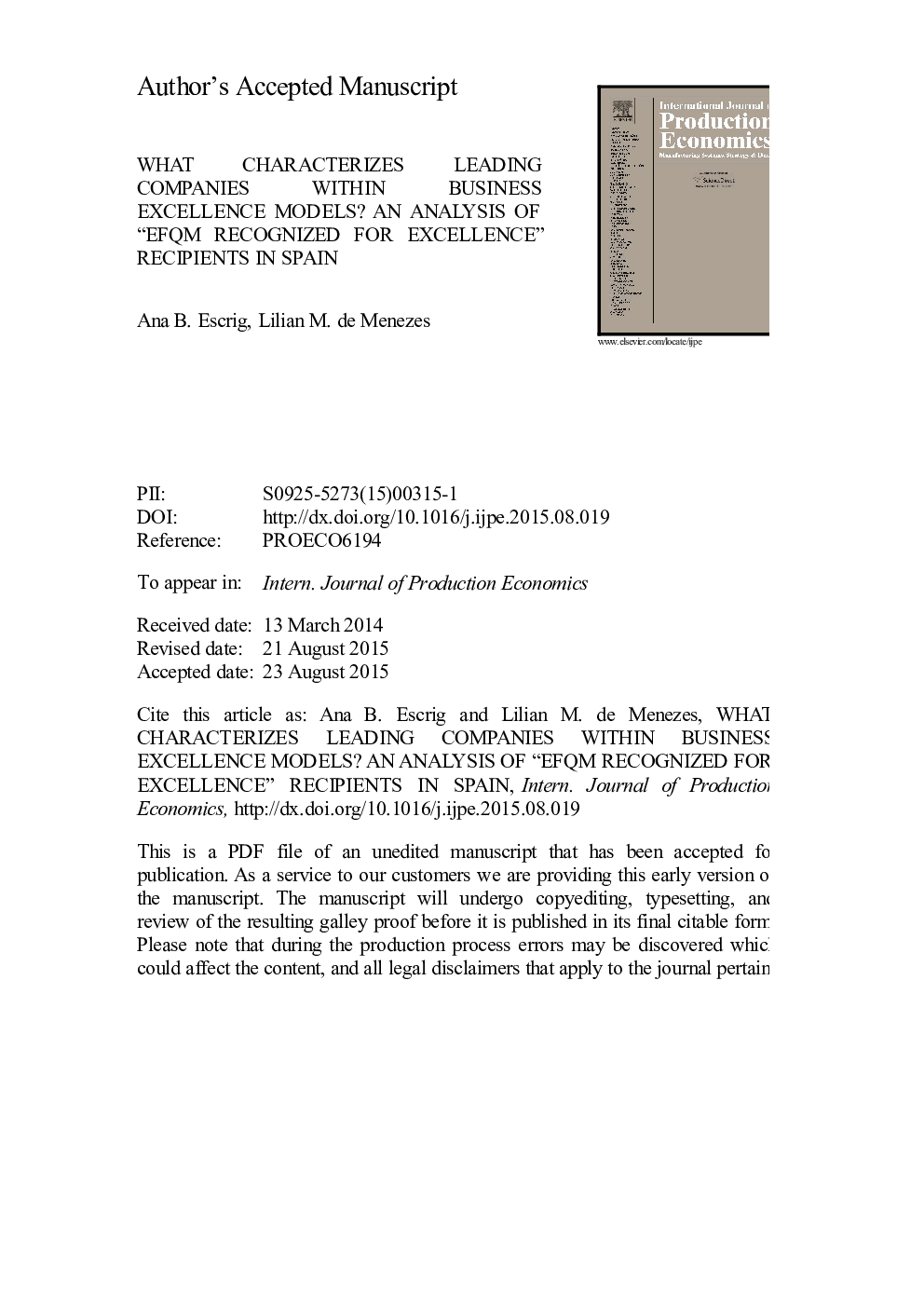| Article ID | Journal | Published Year | Pages | File Type |
|---|---|---|---|---|
| 5079712 | International Journal of Production Economics | 2015 | 29 Pages |
Abstract
This paper investigates whether there is a specific approach to the adoption of best management practices embedded in the EFQM Excellence Model, which characterizes leading “Recognized for Excellence” organizations in Spain. In addition, it studies which practices within EFQM's enablers predict high performance. In contrast to most previous research that used surveys of managers' perceptions, this study uses the actual criteria and sub-criteria scores attained by organizations in their assessment for EFQM recognition. Scores of a population of 216 organizations, which were assessed in the period from March 2011 to March 2013, are analyzed via ANOVA, factor and regression analyses. The findings show that Spanish organizations adopt the best practices encompassing the EFQM model in a similar fashion: organizations on average follow parallel trends in the scores received per criterion, and there are no significant differences in the importance attributed to enablers. Either role models are being followed, or most organizations know what is expected by the assessors and try to fulfill these expectations. Consequently, an imitative process disseminates and legitimizes the EFQM model in Spain. In addition, it is found that the People criterion makes a difference in attaining high performance, thus emphasizing the relative importance of the softer dimension in Quality Management. This study contributes to the management literature on best practices, by highlighting a consistent trend in the use of the EFQM model, and also provides insights to managers on how to better allocate resources within Business Excellence Models.
Keywords
Related Topics
Physical Sciences and Engineering
Engineering
Industrial and Manufacturing Engineering
Authors
Ana B. Escrig, Lilian M. de Menezes,
